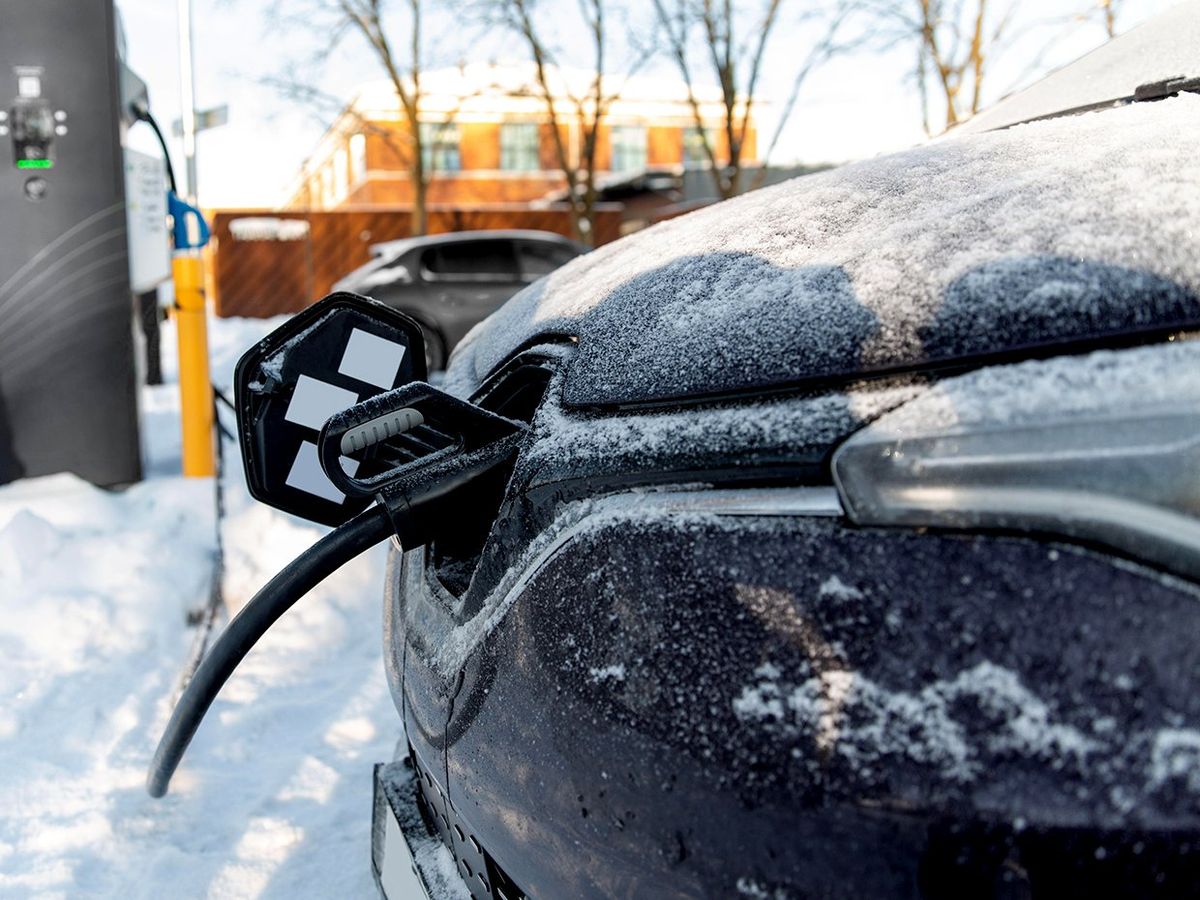While electric vehicles are increasingly popular today, one reason consumers cite for avoiding EVs is the poor cold-weather performance of the batteries. Now, a new study finds, a novel electrolyte for next-generation lithium-ion batteries could help electric vehicles, mobile phones, and other electronics operate and even recharge quickly during extreme freezing temperatures. Potential battery applications in satellites, space probes, and crewed space missions—all requiring full functioning in extreme cold conditions—are similarly compelling.
In the United States, “over half of the states are below zero degrees in winter,” says study lead author Jijian Xu, postdoctoral researcher at the University of Maryland, College Park’s school of engineering. “Therefore it is very important to design batteries that are capable of operating at low temperatures.”
Any new electrolyte might be more expensive than commercially proven electrolytes, at first. Still, the compounds in the new study are made with “common solvents and salts, without toxic components,” says study cosenior author Chunsheng Wang, professor of chemical and biomolecular engineering at the University of Maryland. All in all, the new electrolytes “have great potential for cost reduction by optimizing their synthetic pathways when they are mass-produced,” Xu adds.
Potential next-generation high-performance lithium-ion batteries include components such as NMC811, which is made of 80 percent nickel, 10 percent cobalt, and 10 percent manganese. NMC811 can hold a great deal of energy for its mass, while the low amounts of expensive cobalt it contains make it attractive in terms of cost.
The ideal electrolyte for an NMC811 lithium-ion battery would help support higher voltages of more than 4.5 volts for greater energy densities and faster charging within 15 minutes; it would also prove safe and operate over temperatures ranging from –60 to 60 °C. However, currently no electrolyte meets all these requirements simultaneously. Electrolytes generally have operating temperatures of –20 to 50 °C and are highly flammable.
“The lowest temperature ever recorded in the United States was –62 °C in Alaska, and the highest temperature recorded was 57 °C in California,” Xu says. “We need a more-robust energy storage system that can reliably work during extreme freezing temperatures. Extreme lithium-ion batteries have the potential to boost adoption in electric vehicles, aviation, and defense applications compared with conventional lithium-ion batteries.”
Currently, electrolyte development for batteries depends mainly on trial and error, “lacking guiding principles for electrolyte design,” Wang says. In the new study, the researchers sought to develop universal electrolyte design principles for batteries operating under extreme conditions, he says.
The scientists focused on creating an electrolyte that could satisfy a range of requirements: It had to remain stable and safe while letting a lithium-ion battery operate at high voltages across a wide range of temperatures; permit lithium ions to dissolve with relatively low energy to help electric current shuffle around inside the battery; and limit the development of lithium plating (which can reduce the battery’s capacity) and of lithium spikes, which can damage a battery’s innards and cause short circuits.

The research team’s calculations revealed a group of soft solvents that might prove useful. Whereas hard solvents are made with atoms or ions that usually have a small radius and a high charge, soft solvents typically have a large radius and a low charge.
Current electrolyte solvents in lithium-ion batteries often bond strongly with lithium ions to dissolve the lithium salts. However, the greater the binding energy between a solvent and the lithium ions, the more challenging it becomes for the lithium ions to come out of solution. In the new study, the scientists identified a soft solvent in which lithium salts could dissolve while also minimizing the amount of bonding between the solvent and the lithium ions.
In addition, the researchers added components to the electrolyte that prevented lithium plating and spikes from forming at low temperatures. The components caused thin and relatively electrically conductive layers to form on the surfaces of the electrodes, which supported the quick flow of lithium ions, for faster charging and recharging times.
In tests with 4.5-volt lithium-ion cells with NMC811 cathodes and graphite anodes, the devices retained three-quarters of their room-temperature capacity when charged and discharged at –50 degrees Celsius, and more than half at –60 degrees, given charging times of about 15 minutes.
“Our finding provides a practical drop-in solution for powering electric vehicles with lithium-ion batteries over a broad temperature range—for example, from Florida’s hot summers to Alaska’s cold winters,” Xu says. In addition, “extreme batteries can be used in polar scientific research. Alternatively, extreme batteries can be used for outer space, such as lunar exploration.”
Still, Xu cautions, “the high-temperature performance at 60 °C is still not satisfactory, which requires more effort for further studies.”
The scientists detailed their findings online 8 February in the journal Nature.
Charles Q. Choi is a science reporter who contributes regularly to IEEE Spectrum. He has written for Scientific American, The New York Times, Wired, and Science, among others.



